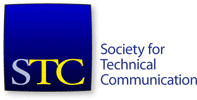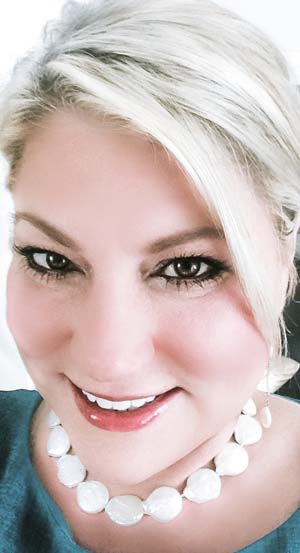 Biographical Questions
Biographical Questions
Who are you? What’s your background? What do you do for a living?
I have been described as, “If Indiana Jones were female and a technical communicator.” I think this means I am fearless innovator. I have more than 20 years of business experience leading Fortune 500 companies’ technical communication departments. I hold a BS in Journalism from Ball State University and an MS in Computer Education and Cognitive Systems from the University of North Texas. I work as a Global Director of Technical Communication Innovation and Best Practices and the Chief Information Architect for Huawei Technologies Co. Ltd. I’m based in the Dallas/Fort Worth area of Texas. I am the co-chair and founder of the OASIS Augmented Reality (AR) in Information Products Technical Committee (TC). I am on the board of The AREA. I also belong to CIDM and the IEEE Computing Information TC. I am an award-winning manager, and I proudly lead an award-winning team. I have presented at the STC Summit and other industry conferences about global documentation improvements and applying emerging technologies, like augmented reality and dynamic content publishing, to improve the customer experience. I hope to bring a new and fresh perspective to the STC board.
When did you join the STC? Why?
I have consecutively been a member the past six years, but I was a member on and off for ten years prior to that. I joined and have stayed with STC because it is a great source of information and networking opportunities for our profession.
Candidate for Office Questions
 Views on the Profession
Views on the Profession
1. Where do you see the profession of technical communications heading in the next five years?
We are certainly living in an exciting time. During this third economic revolution, we will witness significant changes in many professions due to exponential growth in technical innovation and increased globalization. The digital revolution promises to impact existing professions more than the industrial revolution did. Some professions will be displaced. Other professions will embrace change and evolve with the digital transformation as a means to spend more time customizing to user requirements, delivering relevant and timely products to improve the customer experience in meaningful ways. This is my vision for the technical communication profession. Technologies like the IoT, content automation, wearable technology, natural language processing, machine learning, and augmented reality will provide new ways to deliver precise information with less need for human interaction. If we embrace and prepare for the changes, I see us becoming more efficient and productive.
It is difficult to predict what user requirements and expectations will look like in five years, what devices our customers will use to access information, and what their delivery medium of choice will be. Foundational principles of our field, like user task analysis and persona development will be highly important as user needs evolve alongside the advances in technology.
The ongoing culture shift to one of preferred self-service and individual empowerment will drive an increased need for succinct, concise procedural information. Training demands will grow as education becomes less centralized to the institution of learning and more focused on individual, customized, life-long learning.
2. What would you do as VP and later as President to support or change this course?
First of all, this course can’t be changed. I think we must grow with the times or we make ourselves obsolete. This is an area where I can bring a lot to the table.
I am a firm believer in keeping to the foundational principles of good analysis and information architecture, but also a fearless change agent. I would look at adding new content to the Summit to educate on new technology and the impacts to technical communication. STC could host webinars with industry leaders and experts from academia to educate members on new skills to prepare for based on educated predictions for our field. For example, I attended a keynote speech given by Mark Zuckerberg this week. He predicts that video will explode in the next few years. Additionally, most Millennials say they can find a “how to” video about anything they want to learn on the web. We can derive from those two statements that we probably want to research growth expectations in user demands for “how to “ videos rather than or in addition to more traditional documentation.
Operations of the STC
The STC has had well documented challenges and some wins over the last number of years. As one of the elected leaders of the organization your views on the organization’s operations is very important. The next questions will cover this area.
1. What do you see as the right roles for international board and the local and regional organizations?
I think the international board should be the overall governing body that supports and builds membership and owns the STC brand, sets the organization goals and objectives.
2. Where should the organization and its board focus its financial resources in the next year?
Some financial resources should be used on a member needs analysis so we can better understand member retention, as well as how to possibly win back prior members. Additionally, I believe we have to focus on member education opportunities and some university partnership programs. I think with creativity these items do not have to be cost prohibitive.
3. How does your role as an elected leader differ from that of the full-time paid staff?
An elected leader should represent the requirements and needs of the STC members who elected him or her. The full-time paid staff should function to support the board and members in an operations type role. Both the paid staff and the elected leaders should work together to meet STCs goals within the boundaries of their separate roles.
Members and Chapters
1. How should STC address the changing needs of organizations for technical content and the potential skills gap of STC members?
STC should provide a heavy focus on training members through formal classes, the summit, webinars, suggested reading lists, articles in the STC literature, guest expert speakers, mentor programs, and university partnerships. Another possible approach is providing a means for STC members to get together to do free short internships to gain experience and credit on a resume while the other member gains some free labor to help out in a pinch. We need to have a focus group as part of a needs analysis with members to find out from them what would be the most beneficial to them.
2. Although membership in STC surges from time to time, the general trend is downward. What would you do to reverse that trend?
In December, I increased STC membership in China by 22. I think understanding what countries and communities especially need more resources for technical communicators and focusing on them first to drive membership is a good starting point. However, the international membership would require a new model that reduced overhead. A needs analysis looking at current members and the members STC has lost in current years is in order. If we are losing members, then somehow the cost/benefit ratio is not aligned. I would want to find out the data behind that before making assumptions on how to drive membership. I have ideas about how to turn the needs analysis itself into a member benefit, too.
3. Should the STC keep supporting the local chapters? If Yes, Why & How? If no, Why?
I think the active local chapters serve a very important purpose. They provide immediate and close resources for members. Some members are unable to travel to the Summit or other conferences. Having a local chapter allows them to network with others in their field without travelling. Local chapters also provide many leadership experience opportunities to members.
The Office of Vice President and President Elect
1. What can you reasonably expect to accomplish as VP and President?
As a member of a board, I can accomplish a lot through respectful collaboration, discussion, driving consensus and influencing others. A lot of success in this area is derived from a person’s character and behavior outside of meetings. My track record in this area has been strong because I am sincerely interested in the opinions and point of view of others. I also know when a group has to be decisive and quick in certain situations and I can usually rally a group if necessary. I think my positive and energetic approach breeds positive energy from others which is helpful during times when we do disagree.
2. What will you do in the first 100 days?
In my first 100 days, I will research, listen, and learn as much as I can. I will begin with spending time with Adrian Hunt to understand her vision and the current objectives of the board and the financial status. I will get to know members of the board, the executive Director and other STC employees who I don’t already know to begin relationship building.I will reach out to existing members and prior members to gather membership requirements. I will collect all of the facts that I can so that I am fully informed to make decisions.
3. What legacy do you want to leave after you’ve finished your terms as VP and President?
The legacy I would like to leave after my terms as VP and President:
- I would drive an increase in international membership to keep pace with increased globalization as a growing trend. As part of this, I would completely reform the existing international model to best meet the member needs while keeping the cost and maintenance efficient.
- I would proactively, drive the necessary cultural evolution of our trade to meet new user experience requirements coming in the near future giving our members opportunities to evolve.
- I would like to increase STC’s focus to better serve ALL types of technical communication, not only technical writing as the delineation continues to blur, and
- I would like to attract and meet the needs of cross-generational technical writers as millennials quickly become half of the US workforce.
The Big Last Question …
Why are you the right person to be the next VP for STC?
I have been privileged in my twenty plus years as a technical communication leader to gain valuable customer and business experiences. My entire career, I have worked for large, global Fortune 500 companies setting the strategy and direction for the product line customer documentation, customer training and user experience organizations I have managed. I have been mentored by some of the best in our industry. In turn, I have developed and mentored many technical communicators over the years. I have spent a great amount of time in front of large customers from presenting to executives to job shadowing technicians at their customer sites.
In my current role, I lead innovation and best practice research in technical communications. Always on a quest for new knowledge, I am also involved in several cutting edge technical committees involved in setting standards. I am well connected in the business world inside and outside of the technical communication industry allowing me wonderful opportunities to hold think tanks with some exceptionally interesting and brilliant people. I want to use all of these experiences and leadership traits to serve the STC members and the STC board. I have so much to share. STC has provided many learning and networking opportunities to me. I would like to give back. I am passionate about our field. I believe serving as VP on the STC board will enable me to collaborate with so many talented technical communicators. Together we can do great things to serve current members, provide value back to members we have lost, and to drive new membership.
I would be greatly honored and it would bring me a lot of joy to serve my fellow technical communicators through the STC board.